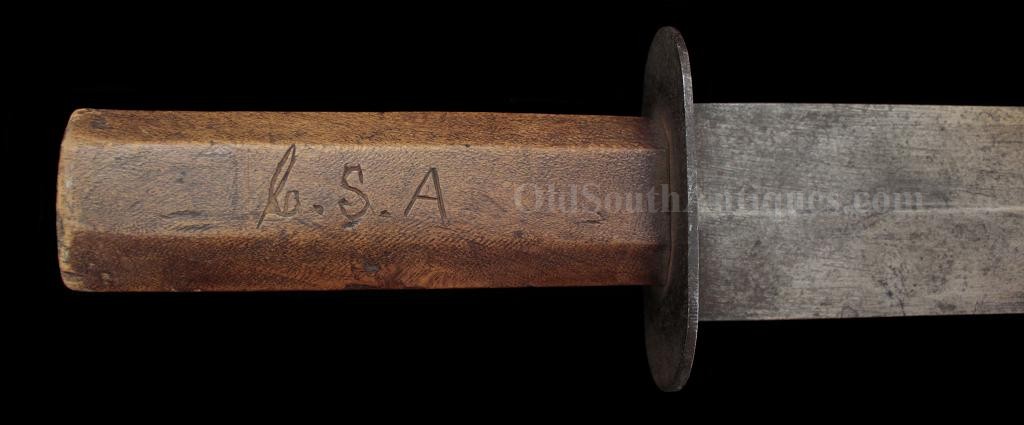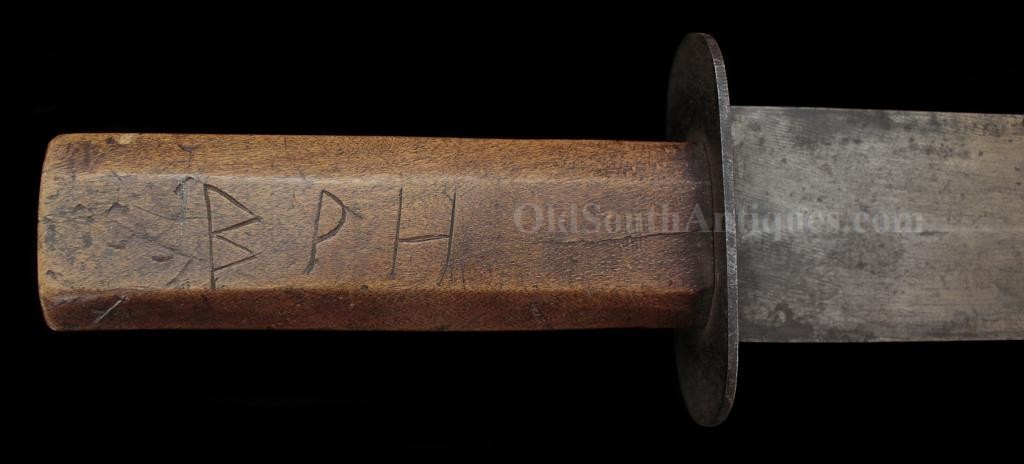
| Catalog | Past Items | Order Info | Terms/Conditions | About Us | Inventory Clearance |
Every soldier North and South needed a knife when they marched off to war and in the South it was fashionable, if not practical, to carry a large fighting knife, the bigger the better judging from war era photographs. Like the Code Duello, knife fighting was a Southern custom that was rarely engaged in by those above Mason/ Dixon's line. In truth, relatively little fighting was done with them North or South, but there are numerous documented cases of Confederates engaging in hand to hand combat with knives.
During the decade before the War, Bowies were in fashion and were widely carried by men North and South. Therefore, it is impossible to categorize Bowies as Confederate knives unless they have a documented history of Confederate use or are one of the few that have Southern maker marks or characteristics. This knife was purchased by Shannon Pritchard of Old South Military Antiques LLC, from Samuel Fulton Larson, a direct descendent of Federal General Leonard Fulton Ross (July 18, 1823 / January 17, 1901). The knife had been passed down through General Ross’ family, but the history of how General Ross acquired it remains a mystery. Was it a capture? A gift? We will probably never know.
The massive Bowie knife is truly extraordinary. It is twenty-six inches long! The blade is missing approximately one-half inch of the tip, yet it remains twenty inches long. Its double-edged blade is two and a quarter inches wide. This is certainly one of the largest Confederate Bowie knives ever made. The blade was extremely well formed by someone who was skilled in the art. Its eight-sided fruitwood grip is secured by the tang having been peened over an iron washer. The cross guard is iron. It is still sheathed in its original heavy leather scabbard. From the "ghost” at the top, I can see that it once had a sheet metal throat, which is now missing. The scabbard remains strong and solid and has the remains of wax in the recesses of the crazed surface.
The Confederate soldier who carried it carved his initials, BPH, into the grip on one side, and showed his pride in his new country by carving CSA deeply into the other side of the grip. This rare, but most desirable carving was executed neatly, and deeply. The shape of the blade and the offset iron cross guard are very, very reminiscent of the Richmond, Virginia made Boyle/Burger knives, though I cannot say with certainty that it was made by either.
Copyright © 2024 OldSouthAntiques.com All Rights Reserved.
Privacy Policy | Terms of Use
Powered by Web-Cat Copyright © 1996-2024 GrayCat Systems





